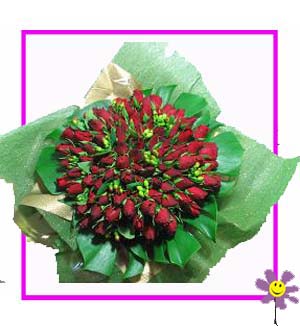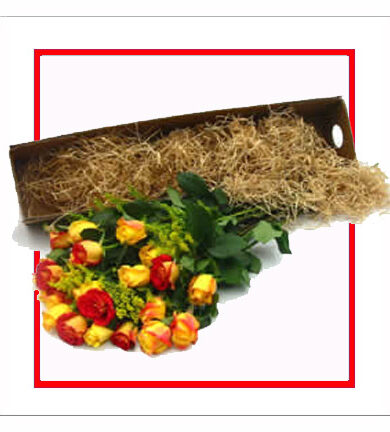Pavurallakonda (“pigeon hill”) is a hillock west of Bhimli, about 24 km (15 mi) from Visakhapatnam. The Buddhist settlement found here is estimated to date back from the first century BC to the second century AD. On the hillock (which overlooks the coastline) are 16 rock-cut cisterns for collecting rainwater. Gopalapatnam, on the Tandava River, is a village surrounded by brick stupas, viharas, pottery and other Buddhist artefacts. |
Its skilled workforce allowed the entry of many BPO companies (such as HSBC). Visakhapatnam is experiencing growth in the IT sector, contributing to the local economy. The city has 102 small and medium-sized software and BPO companies, of which about 10 began operation between 2005–2007. Software exports from Visakhapatnam in 2007 were valued at 2450 million (US$45 million), an increase of over 100 percent over the previous year. |
Residents of Visakhapatnam use a public transport network provided by the APSRTC, which runs buses along a number of routes across the city and its suburbs. The APSRTC complex at Asilametta is the hub for most of these buses, and there are traffic jams during rush hours in the heavily populated, congested Asilametta Junction. The city corporation plans subways, pedestrian overpasses and flyovers to address traffic problems. |
Historians theorise that centuries ago (when Uttarandhra was part of the Kalinga Empire), Buddhist missionaries and merchants may have taken Telugu script (derived from Brahmi script) to Southeast Asia from the shores of Uttarandhra, where it evolved into the scripts of Mon, Burmese, Thai, Khmer, Javanese, Balinese and possibly Sinhala (spoken in Sri Lanka). Their similarities to Telugu script can be discerned even today. |
It is a hub for iron ore and other mineral exports; ore from Andhra Pradesh, Odisha, Chattisgarh, Jharkhand and Madhya Pradesh is transported to Visakhapatnam by rail and road transport. From the port, minerals are exported by ship to China and other countries. Visakhapatnam district and its surrounding area have bauxite reserves of 1,000 MT, manganese ore and titanium reserves in its beach sand. |
Indira Priyadarshini Stadium (five ODI matches): Also known as the Municipal Corporation Stadium, it hosted the first ODI match on 9 December 1988 and the last of the five on 3 April 2001. The stadium has discontinued hosting ODI matches in favour of the newer ACA-VDCA Stadium in Madhurawada. The stadium is in the hills, and provides a scenic view.It also hosted the Twenty-20 match, but was abonded due to rain. |
ACA-VDCA Stadium (four ODI matches): The ACA-VDCA Stadium has hosted four ODIs, with India winning against Pakistan in the first, Sri Lanka in the second, Australia in the third and the West Indies in the fourth. The stadium has been upgraded for night matches. It has the most advanced floodlights in India, after Jawaharlal Nehru Stadium in Kochi. The stadium was recently named the YS Rajasekhara Reddy Stadium. |
Brandix Apparel City is in operation in Atchutapuram. This is a textile-based SEZ covering 1,000 acres (4.0 km2). The aim of this project is to provide 60,000 local jobs. It is expected that exports will reach 55 billion (US$1 billion) when fully operational. The SEZ has foreign textile manufacturers, including Pioneer Elastic Fiber, Ocean India, Quantum Clothing, Fountain Set Group and Limited Brands. |
Simhachalam is a hill shrine of Lord Narasimha 16 km (9.9 mi) north of the city. The carved 16-pillared Natya mandapa and the 96-pillared Kalyana mandapa are highlights of the temple. It was constructed by the Gajapathi kings of Odisha before 1500 AD. Pusapati Ananda Gajapati Raju was a descendant of Maharaja Vijayrama Gajapati Raju, bahadur of the former Vizianagaram princely state. |
With the city’s location on the Bay of Bengal, the humidity is high throughout the year. Total annual rainfall is about 945 millimetres (37.2 in), most of which falls during the southwest monsoon. October is the wettest month, with about 204 millimetres (8.0 in) of rainfall. November through February is the best time to visit Visakhapatnam weather-wise, since temperatures are moderate. |
Visakhapatnam is predominantly Telugu-speaking. The Telugu spoken by the middle class is the standard dialect, while a significant population who have settled down in the city from the adjoining villages and neighbouring districts of Vizianagaram and Srikakulam speak the Uttarandhra (north coastal) Mandalikam dialects while people from East Godavari speak the Godavari dialect. |
Nearby is another Buddhist site, Bojjannakonda, with a number of images of the Buddha carved on the rock face of the caves. At Ligalametta there are hundreds of rock-cut monolithic stupas in rows, spread across the hill. Among other Buddhist attractions are a relic casket, three chiatya halls, votive platforms, stupas and Vajrayana sculptures. |
Visakhapatnam is a cosmopolitan mix of people from various parts of India. From a population of a few thousand during the 18th and early 19th centuries, the population grew steadily. The city doubled its population from 1990–2000, due to a large migrant population from surrounding areas and other parts of the country coming to work in its factories. |
Visakhapatnam has a steel plant known as VSP or RINL. The capacity of the plant has been upgraded to 6.3MT, and it covers an area of 20,000 acres (81 km2). It is planned to become a 20MT plant in the future, the largest plant in a single location. The plant had revenues of 144570 million (US$3 billion) for 2011–2012 and has about 17,800 employees. |














































































































































































